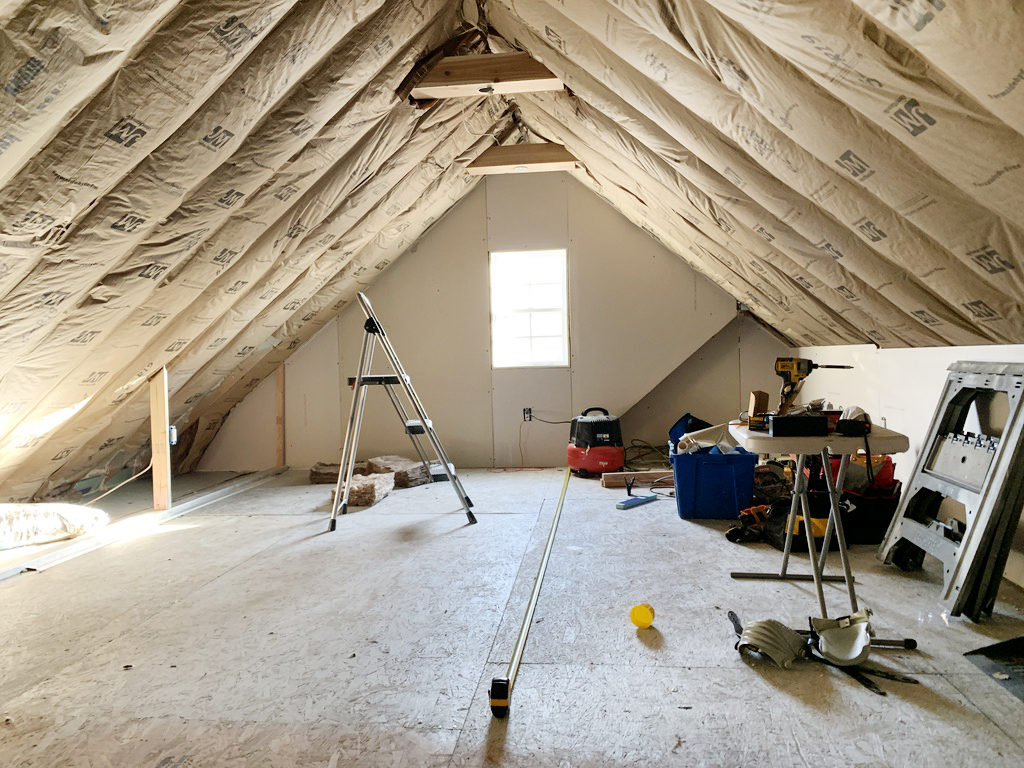Putting A Vapor Barrior In Your Garage Attic

Holes in the vapor barrier that allow humid air through may allow a lot more water vapor into an assembly than the vapor barrier is stopping.
Putting a vapor barrior in your garage attic. Whether using loose fill or batts put the vapor barrier closest to the warm side of your installation where hot moist air would get in facing the house s interior in cold climates beneath floor insulation and the attic s interior in hot climates on top of floor insulation. If your garage is 45 degrees and you have a bonus room heated to 72 degrees above the garage the vapor retarder faces the upstairs room. The inner surface in colder climates and the outer surface in hot humid climates. In existing spaces oil based paints or vapor barrier latex paints offer an effective moisture barrier.
Not every wall does. This acts as a barrier to keep heated moist air from rising up into the attic during cold weather. Some regions don t require a vapor barrier. Such a location works both as a vapor barrier as well as an air barrier and eliminates the need for an external air barrier not a easy application on a multi storried building as well as any special electrical pans and their sealing.
In hot humid climates attics should not be vented and vapor retarders should not be installed on the interior of assemblies. And the ceiling acts as a enough of a vapor retarder. Your first job after the studs are in place is to fill those walls with insulation. The best approach for a vented attic in a cold climate is installing a layer of drywall with a good coat of latex paint the paint creates a semi permeable vapor barrier.
A vapor barrier reduces the movement of water vapor by diffusion. I install my vapor barrier in the middle of the wall system between the two walls. You can forego the plastic and use a vapor retarder kraft faced insulation or latex ceiling paint in all other climates except hot humid or hot dry climates. Adding a second vapor barrier could cause condensation to become trapped in the insulation between the two vapor barriers.
The insulation fiberglass or cellulose is then placed on top of the drywall with no vapor barrier above or below. If you are not sure if you need insulation in your walls follow along with this flow chart. After the insulation is in place you will want to add a vapor retarder sometimes called a vapor barrier if you need one. Over time this trapped moisture can rot the wood framing in your attic or cause mold and mildew to appear.
When a vapor barrier is on the side of a wall where the dry air is i e outside in winter or inside in summer moisture problems can occur. First of all a garage is not a signicant source of vapor as it is not occupied that much and you don t cook or bath in in it.














































